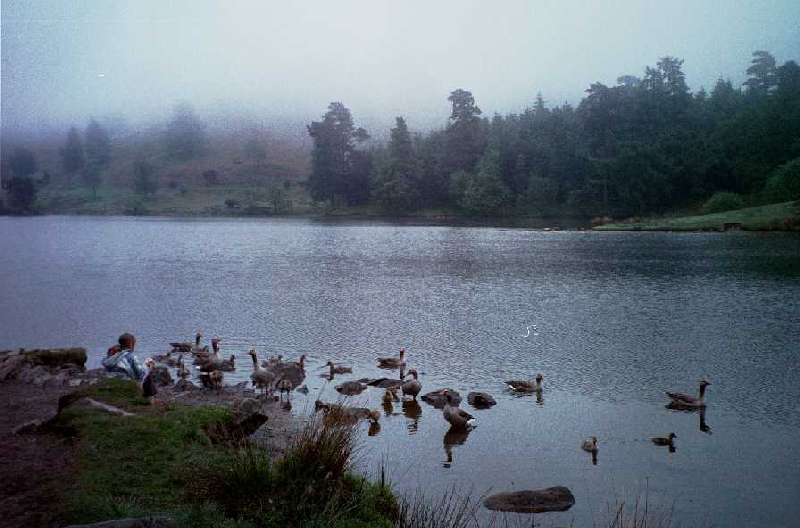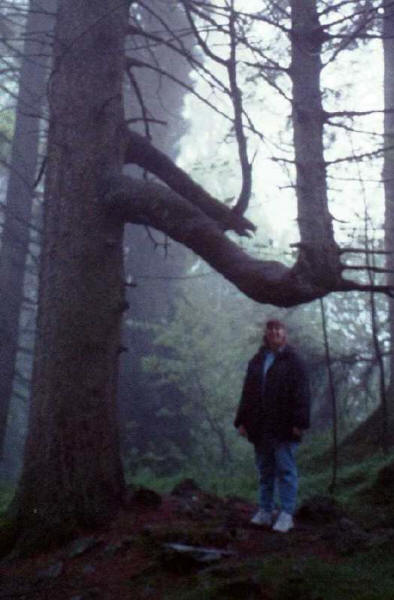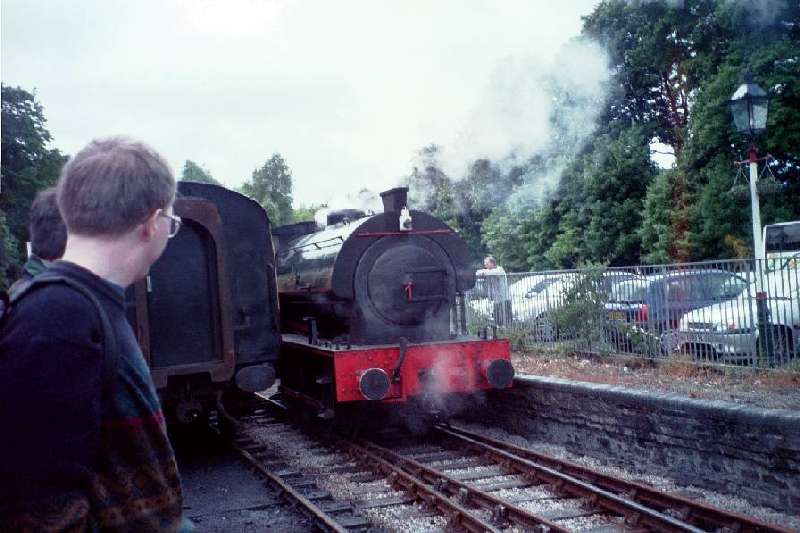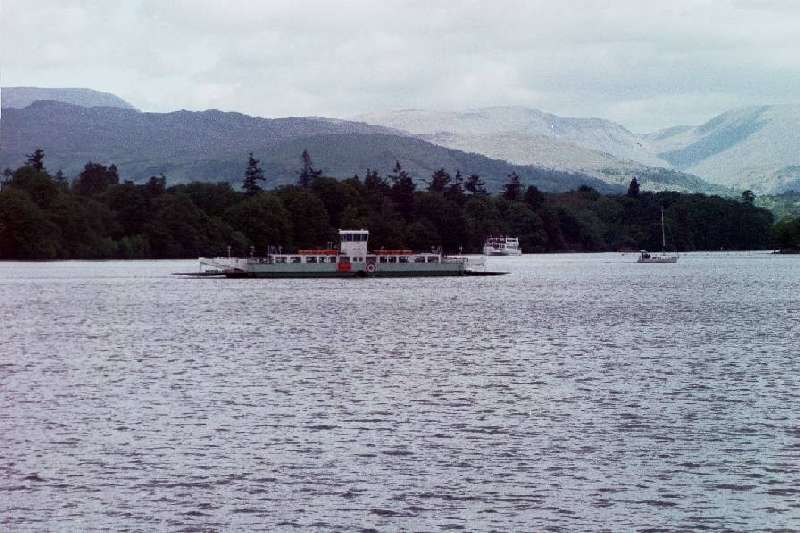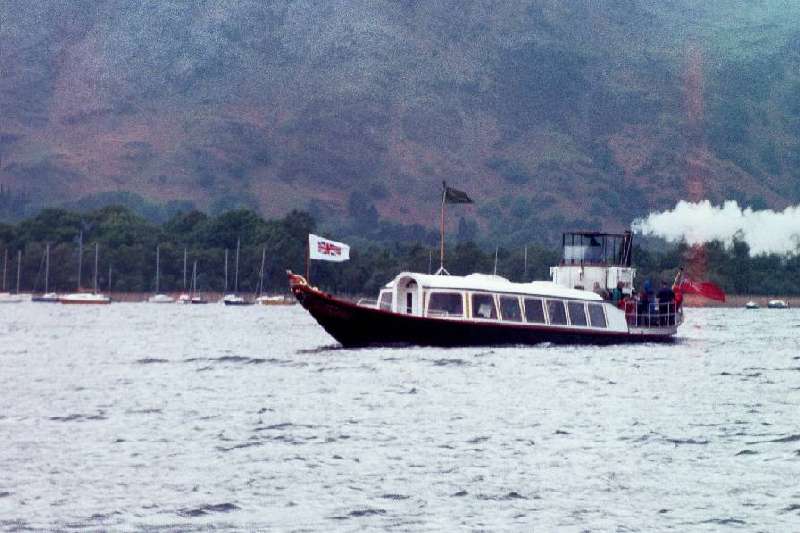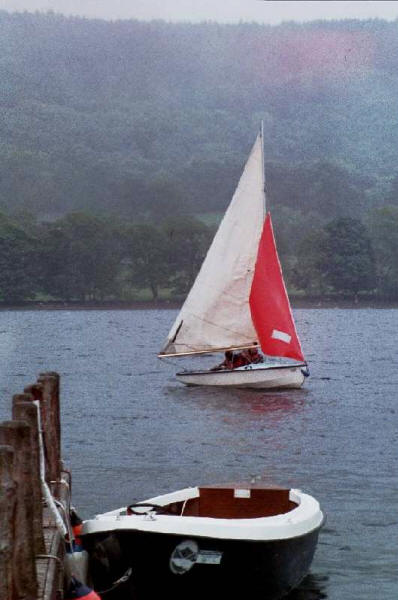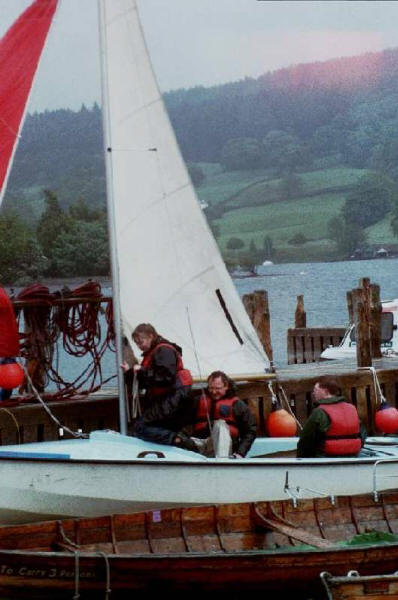Lake DistrictMay 2001During half term, we went for short holiday to the Lake District, staying in Broughton-in-Furness. Planned some months ago, the outbreak of Foot and Mouth Disease closed meant that our visit was shorter than originally planned, and we weren't able to take to the high tops (many of which were opened from 9 June). However, we were determined to have a good time whatever! On Monday we travelled to Tarn Hows, one of the very few areas with footpaths open. Even in normal times this is one of the most visited spots in Lakeland, and with seemingly half the people in the southern Lakes doing the same as us in seeking what walks there were, it was very busy indeed. The tarn, to the north of Coniston, is partly artificial, being three tarns joined together in the 19th century, and most of the trees surrounding it are planted by man. When the tarn and its setting came up for sale in 1929, they were bought by Beatrix Potter who sold the half containing Tarn Hows to the National Trust, and bequeathed the rest of the estate to the Trust in her will.
The Furness Railway branch from Plumpton Junction near Ulverston to Lakeside was opened in 1869, designed from the first to link with steamers on Windermere. The line was closed in 1965. With the A590 road built on part of the line, only the section from Haverthwaite to Lakeside was able to be reopened in 1973, and it is now a popular tourist attraction. Today we had taken the train from Haverthwaite to Lakeside, and then caught the steamer Teal to Bowness. Built by Vickers of Barrow in Furness in 1936, Teal was transported in sections by rail and assembled at Lakeside. She is 142 feet long and 25 feet wide, and can carry 550 passengers at speed of 11 knots.
|
